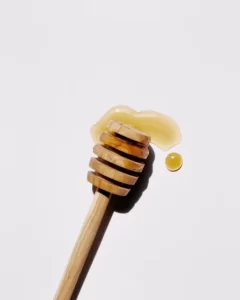Table of Contents
- What Makes Manuka Honey Different?
- Factors to Consider When Choosing Manuka Honey
- 1. MGO Rating: The Key Indicator of Quality
- 2. GMO-Free and Pesticide-Free Certifications: Ensuring Quality and Safety
- 3. Ethical Production Practices: Supporting Sustainable Beekeeping
- 4. Taste and Texture: Indulge in the Delightful Experience
- 5. Traceability: Know the Story Behind Your Honey
- 6. Third-Party Testing: Ensuring Quality and Purity
- Conclusion
Manuka honey has gained widespread recognition in the health and nutrition world for its unique properties and potential health benefits. However, not all Manuka honey is created equal, and it’s important to know what to look for when purchasing this Honey with Superpowers™. In this comprehensive guide, we will walk you through the key factors to consider when choosing Manuka honey, including its MGO rating, GMO-free and pesticide-free certifications, ethical production practices, and more. Whether you’re a seasoned Manuka honey enthusiast or a first-time buyer, this guide will help you make an informed decision and find the best quality Manuka honey for your needs.
What Makes Manuka Honey Different?
Before diving into the details of how to choose Manuka honey, let’s briefly understand what sets it apart from regular honey. Manuka honey is raw honey from New Zealand that is derived from the nectar of the Manuka tea tree. What makes Manuka honey unique is its high levels of Methylglyoxal (MGO), a naturally occurring nutrient found only in the nectar of the Manuka flower. MGO possesses antibacterial properties, making Manuka honey a sought-after product for its potential health benefits.
Factors to Consider When Choosing Manuka Honey
When it comes to choosing the best Manuka honey, there are several factors to consider. By paying attention to these key aspects, you can ensure that you are purchasing authentic, high-quality Manuka honey that contains the beneficial nutrients you’re seeking.
1. MGO Rating: The Key Indicator of Quality
The MGO rating is arguably the most important factor to consider when choosing Manuka honey. The MGO rating indicates the potency of the Methylglyoxal levels in the honey, which directly impacts its unique taste and beneficial properties. The higher the MGO rating, the stronger the honey’s flavor and potential health benefits will be. Look for Manuka honey that clearly displays its MGO rating on the packaging, ensuring transparency and allowing you to make an informed decision.
2. GMO-Free and Pesticide-Free Certifications: Ensuring Quality and Safety
To ensure that you’re purchasing a high-quality product, look for Manuka honey that is certified GMO-free and free from pesticide sprays. These certifications guarantee that the honey is produced without the use of genetically modified organisms and harmful pesticides, preserving its natural goodness and ensuring your safety.
3. Ethical Production Practices: Supporting Sustainable Beekeeping
Supporting ethical beekeeping practices is not only beneficial for the bees but also contributes to the overall sustainability of the environment. When choosing Manuka honey, look for companies that prioritize ethical production practices. This includes leaving enough honey for the bees to sustain themselves during the winter months and minimizing unnecessary hive movements to reduce stress on the bees. By supporting ethical beekeeping, you can enjoy your Manuka honey knowing that it has been produced in a sustainable and responsible manner.
4. Taste and Texture: Indulge in the Delightful Experience
While purity and potency are important, the taste and texture of Manuka honey also play a significant role in your overall experience. High-quality Manuka honey will have a dark color and a rich, creamy consistency. Its flavor should be earthy, reminiscent of sticky caramel, and unlike any other type of honey. The MGO rating influences the taste and texture of Manuka honey, with higher-rated honey offering a richer flavor and a thicker, creamier texture. Look for Manuka honey with an MGO rating above 200 for a unique and delightful taste experience.
5. Traceability: Know the Story Behind Your Honey
Traceability is an important aspect to consider when purchasing Manuka honey. Look for brands that provide traceability features, such as a QR code on the packaging. By scanning the QR code, you can access detailed information about the honey, including its harvest location, MGO levels, and even the beekeeper behind the suit. This transparency allows you to verify the authenticity of the honey and gain a deeper understanding of its journey from hive to jar.
6. Third-Party Testing: Ensuring Quality and Purity
To ensure the quality and purity of Manuka honey, it is crucial to choose brands that subject their products to third-party testing. Independent lab tests verify the MGO levels and potency of the honey, as well as check for any contaminants such as pesticides. These tests provide an extra layer of assurance that the Manuka honey you’re purchasing is authentic and meets the highest quality standards.
Conclusion
Choosing the right Manuka honey can be a daunting task, but by considering the factors outlined in this guide, you can make an informed decision and find the best quality honey for your needs. Remember to look for the MGO rating, GMO-free and pesticide-free certifications, ethical production practices, and traceability features when purchasing Manuka honey. By prioritizing these factors, you can enjoy the unique flavor and potential health benefits of authentic Manuka honey, knowing that it has been produced sustainably and with care. So go ahead, indulge in the world of Manuka honey and experience its superpowers for yourself!
Note: This guide was created by https://aboutmanukahoney.com and is for informational purposes only. It is not intended to provide medical advice. Please consult with a healthcare professional before incorporating Manuka honey into your diet or skincare routine.



